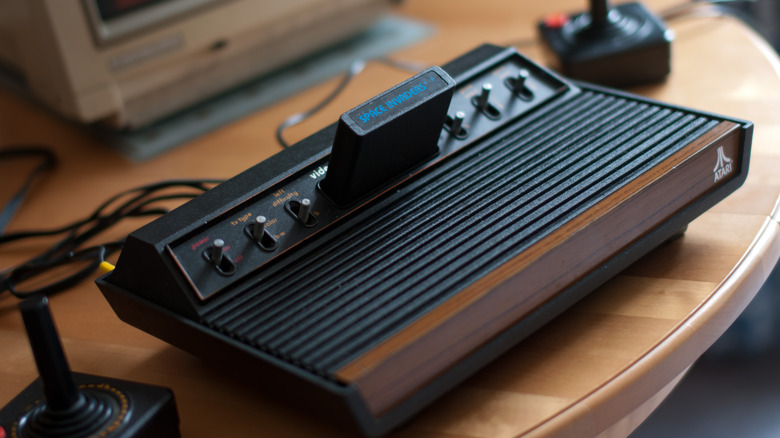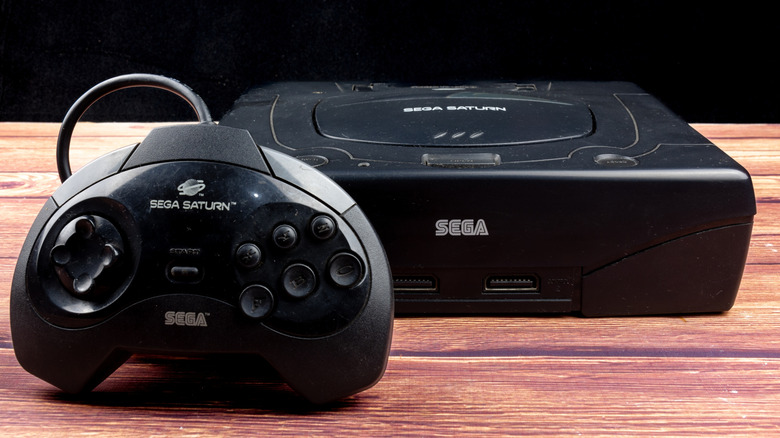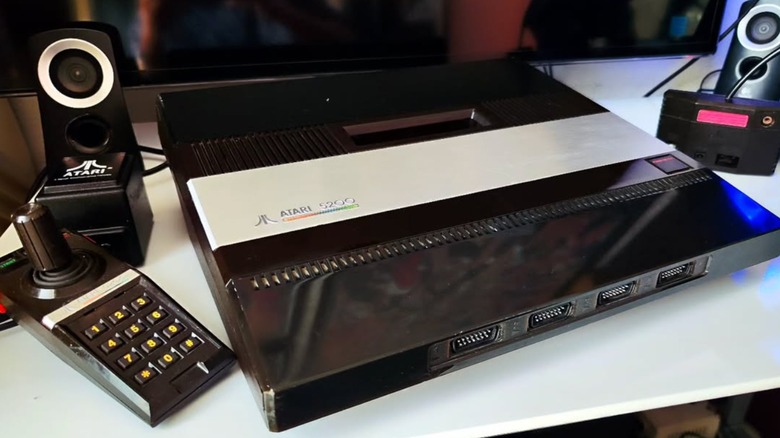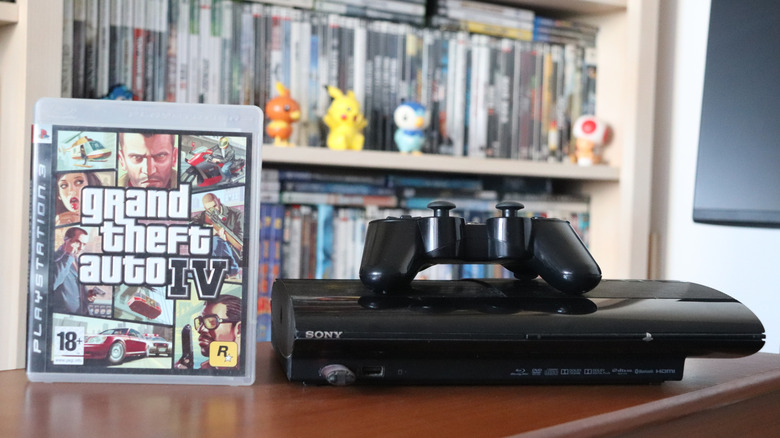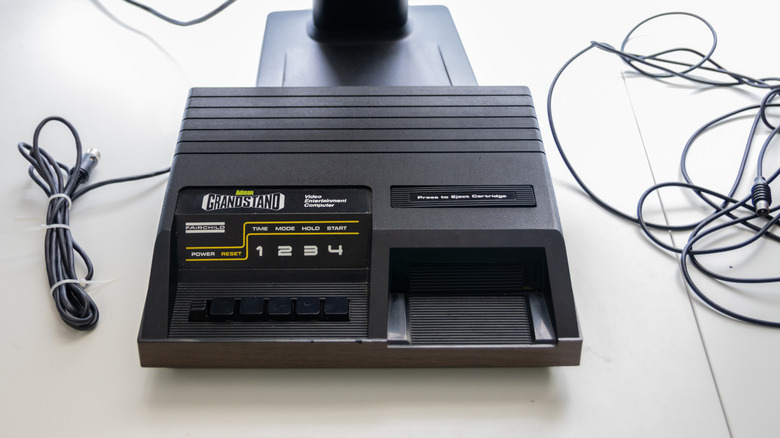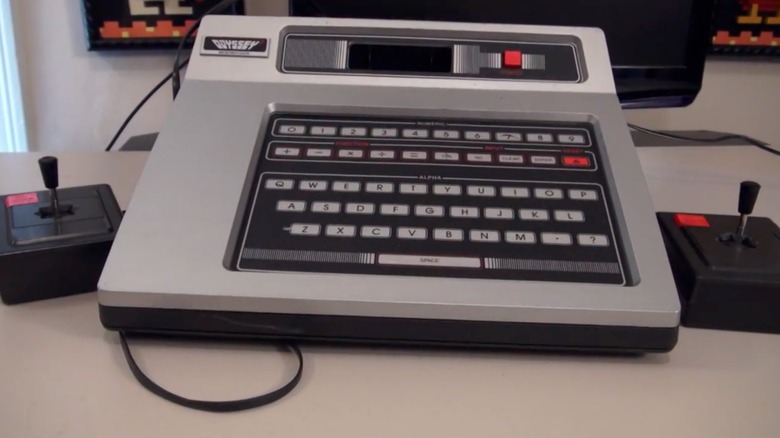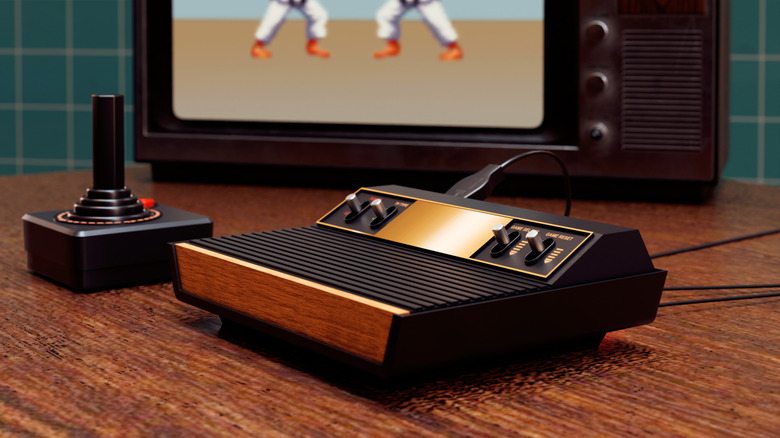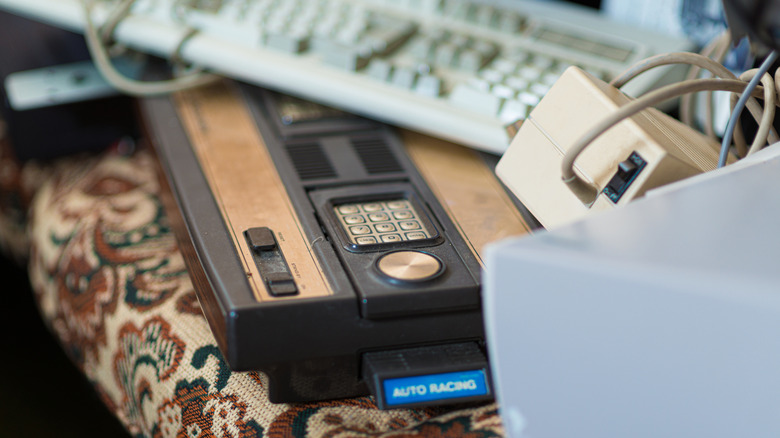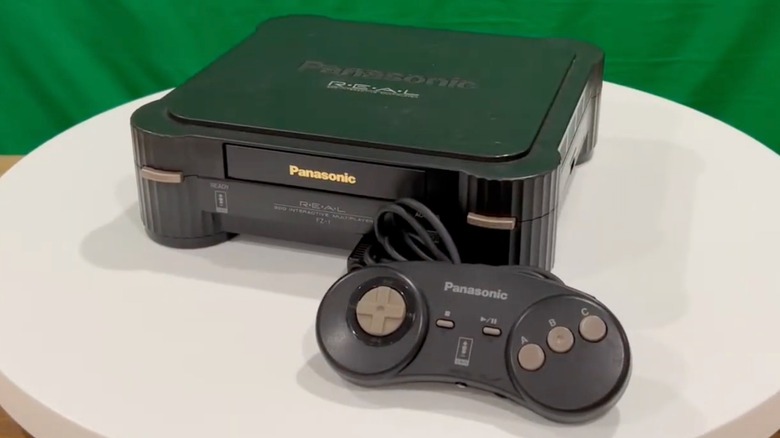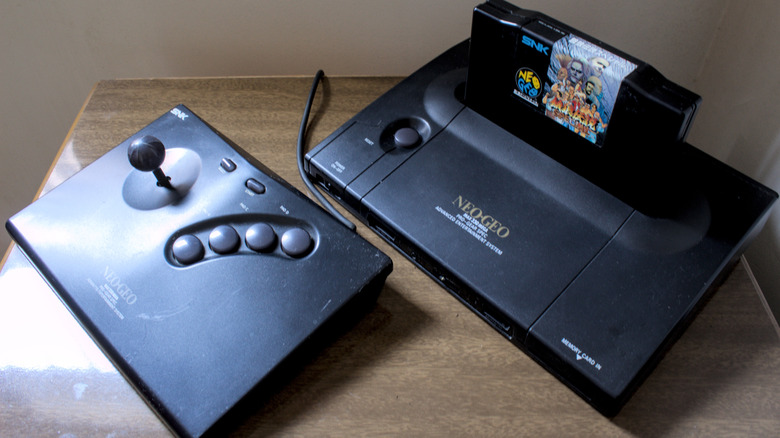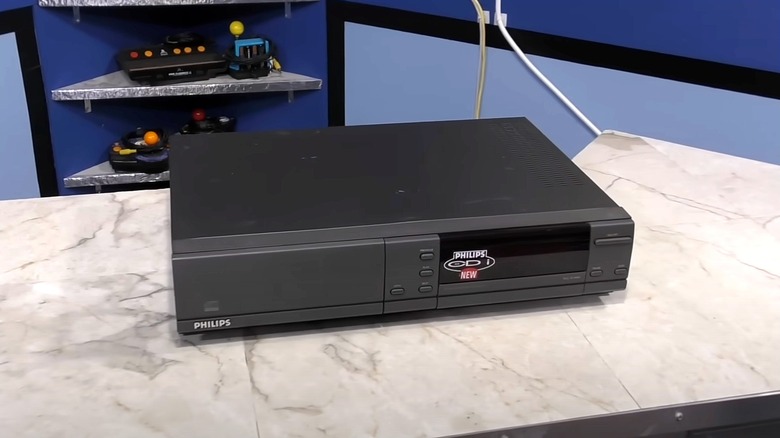The Most Expensive Game Consoles Ever, Adjusted For Inflation
When the PlayStation 5 and Xbox Series X launched for $499, the internet lit up with complaints about the high prices, not to mention the need to buy games afterwards. What if those consoles didn't cost $499, but as much as a decent used car, for example? There was a time when children spent months circling consoles in printed Sears catalogs, and to get one, they scattered hints around birthdays, good grades at school, and, of course, heroic promises to do chores for the rest of their natural lives. From the 1970s to the early aughts, getting into video games demanded huge sacrifices from parents eager to please their children since those electronic innovations were far from cheap.
To understand the true cost of legendary game consoles, we must see through the inflation lens. The concept is quite simple: the $200 your parents spent on a game console in 1977, for instance, had way more buying power than $200 does today. For a fair comparison, we've taken the original launch prices of famous game consoles in the United States and adjusted them to 2025 dollars using the official Consumer Price Index (CPI) data from the U.S. Bureau of Labor Statistics. You'll be astonished by the unexpected value of old video game consoles today and get an idea of how much your mom and dad loved you, even if they thought video games were among the dumbest things to waste money on. So, buckle up and look at the entertainment giants that once ruled countless living rooms while terrorizing entire family budgets.
Sega Saturn — $849
By the mid-1990s, the 16-bit game console showdown was winding down — the industry had turned its attention to the upcoming 32-bit processors and the vast storage of CD-ROMs. Surfing the wave of the Genesis console, Sega geared up to lead the charge with a next-generation machine, the Sega Saturn. Complex and powerful, it boasted a unique dual-CPU architecture featuring two Hitachi SH-2 processors — an absolute beast for 2D graphics but not that good for 3D gaming. Launched in Japan in late 1994, it was set to debut in North America in May 1995, but at the first-ever E3 trade show, the Japanese headquarters pressured its American branch to announce that the console would be available "right now" for $399 ($849 in 2025 money).
It turned into a strategic disaster. The idea was to get a head start on Sony's forthcoming PlayStation, but it backfired since the Saturn's surprising, unready launch meant only a handful of games and few retailers stocking it, infuriating partners such as Walmart and KB Toys, which, in retaliation, refused to sell the system in their stores. Worse, hours later at the same event, Sony revealed the PlayStation's price, $299, which people received with thunderous applause. That $100 difference was devastating. Years have passed, and today the Sega Saturn is a beloved cult classic, cherished for its library of 2D games like "NiGHTS into Dreams," the epic RPG "Panzer Dragoon Saga," and "Guardian Heroes." If you loved the Saturn, you can buy a pre-owned one for $100 on eBay, and its games, too.
Atari 5200 — $924
No matter a gaming system's technological superiority, if it neglects user experience, it will flop. That happened to the Atari 5200. After the 2600's success, Atari wanted an upgraded machine to continue leading the market. So, to compete against Mattel's Intellivision (also on this list) and the new ColecoVision, in 1982 Atari released the Atari 5200 SuperSystem featuring a custom 6502 CPU, enhanced graphics, and sound chips that allowed for ports of arcade games. On paper, it looked promising, but in practice, it left a lot to be desired. For instance, it came with a sky-high $269 price, equivalent to $924 today, and a rather ugly design — a massive black plastic console with the least ergonomic controllers you could ever imagine. To play, you wrestled a non-centering analog joystick and a telephone-style keypad with mushy, fragile, unresponsive buttons.
Here's the worst part, the 5200 wasn't compatible with any of the 2600's colossal library of games. How come Atari didn't consider this before launching? Many households already had a drawer full of 2600 cartridges; thus, asking consumers to pay a premium for a new system that couldn't play their existing games was a fatal miscalculation. Eventually, Atari released an adapter; yes, sadly, the writing was on the wall — they should've thought about it before releasing the console. Despite the flaws, loyal gamers still played some excellent games, including hits like "Ms. Pac-Man," "Joust," "Robotron: 2084," and "Space Dungeon," considered among the best home conversions available in those days. Even if any of these games were one of the most valuable retro video games ever sold, a fun time would be consistently hampered by those dreadful controllers.
PlayStation 3 (60GB) — $978
In 2006, Sony sat atop the console throne with the PlayStation 2 — the unstoppable best-selling console of all time. So, expectations for the next in line were astronomical, and steadfast Sony aimed to deliver not just a step forward but a quantum leap. That legacy fell to the PlayStation 3, a tech behemoth whose ambition was matched only by its price. In the United States, the premium 60GB model launched for an infamous $599 — adjusted for inflation, that's a gape-mouthed $978 today, almost 1.5 times more than the PlayStation 5. Such an exorbitant cost was due to the bleeding-edge technology in the built-in Cell Broadband Engine, a powerful CPU (co-developed with IBM and Toshiba) coupled with an Nvidia-designed RSX "Reality Synthesizer" GPU.
Yet, the strategy revolved around the Blu-ray drive, the direct competitor to Microsoft's HD DVD. The PS3 was deemed a Trojan horse intended to get Blu-ray players into millions of living rooms disguised as a gaming machine. At the beginning, the climb was difficult for the new PlayStation 3 because it had to compete with the cheaper Xbox 360 and Nintendo Wii, but slowly it found its footing and eventually managed to sell over 87.4 million units, barely surpassing the Xbox 360 (the arch rival). No doubt the PS3 became home to a generation of iconic titles like "The Last of Us," the "Uncharted" series, "Metal Gear Solid 4: Guns of the Patriots," "LittleBIGPlanet," and "Demon's Souls." You can still play them on a PlayStation 5 — "Demon's Souls" is glorious on the upgraded console — but remember that "Metal Gear Solid 4" was a PS3 exclusive, so it's only playable via streaming on PlayStation Plus Premium.
Fairchild Channel F — $949
Before Atari became a cultural phenomenon, another machine had already laid the groundwork. In November 1976, the Fairchild Channel F made its debut as the first game console to include a microprocessor and also the trailblazer to use programmable ROM cartridges, which it called "Videocarts." This was the birth of the game console as we know it. Pioneering, however, came at a cost, as the unit's launch price was $169.95, which translates into a hefty $949 in 2025 — a lot indeed, but its technology was cutting-edge. Its F8 CPU was complex enough to support a primitive AI — something never seen before — allowing players to compete against the computer in a home video game. Another innovation that we now take for granted was the "Hold" button on the console, the world's first pause feature.
But in life, nothing is perfect. As bizarre as the machine itself, the controllers were baseless joysticks with a triangular cap on top that could be moved in eight directions, pushed down like a button, pulled up, and twisted like a paddle. Odd, yes, but versatile: a little piece of the future in your living room. Children and adults alike loved swapping out Videocarts and playing different games. But then, a year later, Atari launched the 2600 with better marketing and a much larger library of games, which quickly dwarfed the Channel F. In the end, Fairchild sold around 350,000 units before selling the division to Zircon in 1979. The moral of the story? Being the first doesn't guarantee imminent success.
Magnavox Odyssey 2 — $1,031
You may not remember well, but amid the late 1970s "great console war," there was a third contender, the Magnavox Odyssey. In 1972, Magnavox pioneered the very first home console ever, but in 1978, the company tried a different tack and released the Odyssey 2, an offbeat hybrid of a game console and a computer. At a price of $199, equivalent to $1,031 in 2025, the console had something no other had: a built-in 49-key membrane keyboard intended for games, programming exercises such as "Computer Intro!," and complex strategy titles. This "edutainment" perspective gave the Odyssey 2 a unique identity and a more intellectual experience than just blasting aliens. Forward-thinking, the console's library included the "Master Strategy Series," three games that fused board and video games.
Epics such as "Quest for the Rings" and "Conquest of the World" came with elaborate boards, tokens, rulebooks for combat, tracking stats, and — cherry on top — randomly generated events. Despite the innovation, the Odyssey 2 was a distant third in sales behind Atari and Intellivision, though it sold over a million units in the U.S. by 1983. Aside from price, three other factors influenced its demise: the small library, a weak Intel 8048 microcontroller, and one of its games, "K.C. Munchkin!," being so similar to "Pac-Man" that Atari filed a lawsuit, which Magnavox lost. The Odyssey 2 tried to be a computer and a game console all at once, but in times when consumers craved pure entertainment, its dual-purpose nature didn't fit, and maybe people were not ready for "edutainment." Visionary, no doubt — timed badly, perhaps.
Atari 2600 — $1,050
This is the machine that started it all. Do you recall the iconic woodgrain panel and the stiff-as-a-board joystick with that single red button? The Atari 2600 introduced not only a completely new form of entertainment, but also a revolution. Launched in September 1977 as the Atari Video Computer System (VCS), it carried a price tag of $199, which might seem like a bargain, but after adjusting for five decades of inflation, that's about $1,050 in 2025 — still a lot. In the 1970s, the minimum wage was $2.30 per hour, around $736 for full-time work, so for many parents buying this console for their kids meant stretching the family budget. Regardless, they did; the attraction was irresistible. The 2600 literally brought the arcade experience into the living room and, in the process, created a multi-billion dollar industry. What made the Atari so revolutionary? Its microprocessor.
The MOS Technology 6507 allowed for more complex game logic than the simple circuits of dedicated Pong machines. Also, it popularized the use of swappable game cartridges — and this is the main point here. Even though the Fairchild Channel F had introduced the concept a year earlier, it was Atari's marketing muscle and brilliant library that made it an industry standard. You were not stuck with the games that came built into the console anymore; you could buy new experiences, from the tank battles of the pack-in "Combat" to alien invasions and jungle explorations. Having an Atari was pure magic. Who doesn't remember "Space Invaders," or "Pitfall," or "Adventure"? A monumental success defined the Atari 2600. Over its long lifespan, it sold an estimated 30 million units and reserved a place in the hearts of those who witnessed the birth of something special.
Mattel Intellivision — $1,418
Way before any Sega vs. Nintendo clash, the first "game console war" was fought between superpowers Atari and Mattel. 1979 arrived, and Mattel Electronics stormed onto the battlefield with the Intellivision, a portmanteau of "intelligent television," a sophisticated challenger to dethrone the Atari 2600. The Intellivision hit the shelves with a price of $299, which is around $1,418 in 2025 — too much if you consider that a PlayStation 5 costs $549.99 and the Pro version $749.99. But back then, the Intellivision was, by every technological measure, a clear step beyond the Atari 2600. It boasted a 16-bit processor (the 2600 had an 8-bit one), a superior graphics chip with 16 colors and visually sharper characters, and a three-channel audio chip for more complex sounds.
In a series of commercials, Mattel compared Intellivision's graphics with Atari's, showing the latter's blocky stick figures next to the more realistic, detailed players of Mattel's console. In addition, the console's controller was out of this world: a flat disc for movement instead of a joystick, with a 12-button keypad. Each game included a thin plastic overlay that slid into the controller with the specific functions for that game, which was innovative but, for many thumbs, unforgiving. Famous Mattel games include "Major League Baseball," the groundbreaking proto-city builder "Utopia," and the most celebrated "Advanced Dungeons & Dragons" games, especially "Cloudy Mountain," remarkable early examples of the action-RPG genre. The Intellivision never surpassed the Atari 2600, but sold over three million units and became the premium alternative for a portion of the market willing to pay way more for extra power.
Panasonic FZ-1 REAL 3DO Interactive Multiplayer — $1,588
Developed by the 3DO Company and manufactured under license by Panasonic, the FZ-1 REAL 3DO Interactive Multiplayer remains one of the most expensive consoles ever released and, for some people, iconic '90s paraphernalia that is worth a ton of money. It came onto the scene in 1993 with a futuristic vision, though with a price from another dimension: $699.99 — a wallet-vaporizing $1,588 today. With that amount, you could get two Xbox Series X Digital Edition consoles and keep an extra $300 for games and other gadgets. The 3DO technology was impressive for the time, hence the high cost. It was powered by a 32-bit ARM60 RISC CPU and custom graphics processor, all backed by the vast storage of a double-speed CD-ROM drive. Time Magazine crowned it "1993 Product of the Year," and for a short while, the 3DO looked like the future of gaming, with a premium unboxing and deluxe audio equipment.
But the price was a crucial flaw. Unlike the traditional "razor and blades" strategy where consoles are sold at a loss to make money on software, 3DO's manufacturers actually needed to profit from the hardware itself; thus, prices stayed sky high. So, when Sony entered the market with the PlayStation at less than half the cost, the console's end was inevitable. As for legendary FZ-1 3DO games, it hosted the iconic "The Need for Speed" franchise and featured excellent ports of arcade hits, including "Super Street Fighter II Turbo" and the atmospheric survival horror pioneer "Alone in the Dark." The FZ-1 3DO rightfully predicted the future of 3D, CD-based gaming but failed in terms of price, which cleared the path for competitors to swoop in and reap the rewards.
SNK Neo Geo AES — $1,650
Here, the value proposition was crystal clear: "Bring the Arcade Home." In 1990, the Neo Geo AES brought to your house the exact same hardware as SNK's MVS (Multi Video System) arcade boards. So, you were not playing a "conversion" of your favorite game; you were actually in front of the bona fide arcade experience, pixel by pixel. While your friends played watered-down versions of arcade hits, you had the real deal in your living room. Hardware-wise, the Neo Geo featured a powerful Motorola 68000 CPU and a Z80 processor that pushed massive, colorful images that made the Sega Genesis and Super Nintendo look quaint. Not happy with that, the Neo Geo's controller wasn't some flimsy plastic gamepad. Oh no — it was a heavy, clicky, indestructible arcade stick that felt like it was ripped straight from a cabinet.
Well, that is the glamour. Now the sting. The console was so expensive that SNK initially launched it as rental-only for hotels and video stores before demand prompted a retail release. And the retail price was $649.99 — a jaw-dropping $1,650 today. But wait — that was just the entry fee, since the games themselves, packaged in massive VHS-sized cartridges, often retailed north of $200. In essence, the Neo Geo AES was not a console for the average kid and never achieved mainstream success; it reigned as a luxury item for deep-pocketed gamers. Among the titles you could have played on this lavish console are the epic "The King of Fighters," "Samurai Shodown," "Fatal Fury," "Art of Fighting," the run-and-gun masterpiece "Metal Slug," and the golfing simulator "Neo Turf Masters."
Philips CD-i — $1,923
Philips dared to imagine a futuristic all-in-one interactive device for the whole family — one device to rule them all. But the world wasn't quite ready or sure what "interactive" meant yet. In 1991, when it was launched, the Philips CD-i ran on a 16/32-bit processor with 128 KB of RAM and came from a partnership with Sony to establish the new "Green Book" CD standard. The issue boiled down to a price tag hovering around $799, which in today's money is a breathtaking $1,923. Holy charge. What on earth was the company thinking? With that cash, you could buy a PS5, an Xbox Series X, a Nintendo Switch and still have enough for a celebratory steak dinner.
Perhaps the answer lies in the CD-i's confused own being — it wasn't pitched as a game console, but as a "Compact Disc-Interactive" player that did everything from playing Audio CDs, displaying Photo CDs, and, with an optional (and of course expensive) Digital Video Card, it could even play Video CDs — a precursor to the DVD. This "muddled identity" was the console's doom. While the system had decent full-motion video (FMV) games, gamers didn't want it, as it felt less like unwrapping a fun toy and more like wiring a new VCR, complete with a notoriously clunky remote control. Meanwhile, families interested in "edutainment" were turning their backs on consoles and looking to the more versatile and powerful home PC. Philips' CD-i adventure reportedly cost around $1 billion back then, roughly $2.3 billion in today's money.
